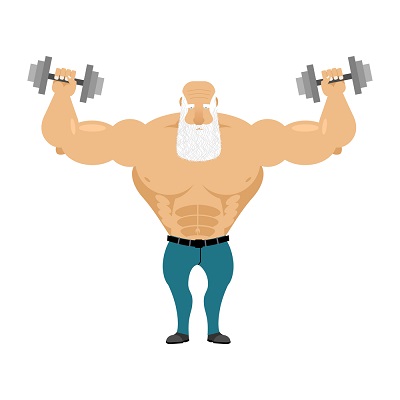 No matter your age, the health benefits of strength training always abound.
No matter your age, the health benefits of strength training always abound.
As we age, one of the biggest perks about lifting weight is offsetting the natural muscle loss that occurs with time. Medically known as sarcopenia (muscle loss as a result of aging), this condition worsens when our muscles are left inactive. In fact, starting in our 30’s, we can lose 3-5% of muscle mass every ten years if we are and continue to remain physically inactive.
While muscle loss is inevitable whether we are active or not, there is certainly a benefit to reducing the amount you will experience.
As we lose muscle, we lose strength and our ability to move freely and easily.
This muscle loss also reduces our stamina. The less stamina we have, the less likely we are to get up and move.
Enter a slippery slope of muscle loss leading to more muscle loss. Chances of being admitted and readmitted to a hospital for health-related conditions increases greatly as we become more and more inactive.
According to an article published on the (1) National Institutes of Health (NIH) website titled “Protecting muscle mass and function in older adults during bed rest,” clear evidence exists showing a relationship between resistance exercise and combating muscle loss and loss of functional capacity.
It is clear that strength training makes sense, no matter your age, to help delay or reduce the natural muscle loss that occurs as part of the aging process, and to fight osteoporosis.
In a study done by (2) Exercise Physiologist Mark Peterson, published in the Medicine & Science In Sports & Exercise, he found that more than 1,300 adults fifty and older could increase muscle mass by an average 2.5 pounds in only five months.
Look at Jack LaLanne, “The Godfather of Fitness”- a perfect example of why strength training can and should be done throughout all ages and stages of life.
For over seventy-five years Jack lived with his top priority in life being his workout each day. He was a big proponent of encouraging the elderly and disabled to work out for health. Jack was a true testament to his preaching, and lived a healthy, vibrant and active ninety-seven years of life.
Once you’re cleared by your doctor and given permission to start strength training, get to it!
There are ways you can safely add strength training to your daily routine. Whether with weights or with resistance bands, strength training is key.
Starting slowly is very important. Using your own body weight to supply resistance is a good place to start. As you become comfortable and confident with exercises and proper form, start using light dumbbells to add more resistance. Jumps of five pounds at a time are a safe bet as you become stronger.
The proof is everywhere, not just in the scientific journals and studies but in the lives of those who were fitness pioneers and lived a long and very active life. Strength training works, no matter what your age. You are never too old to start.






